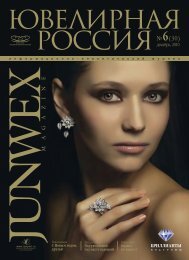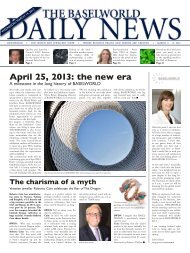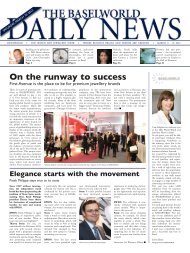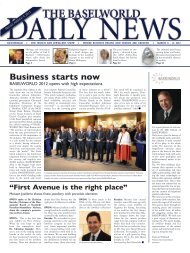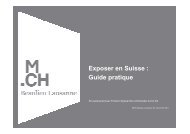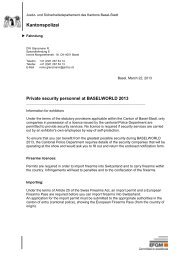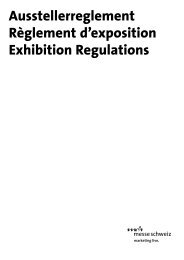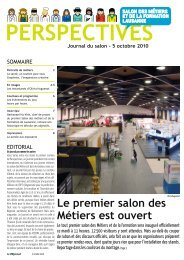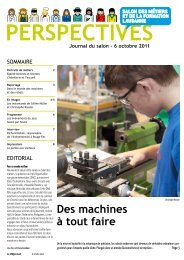WatchTime - August 2012
WatchTime - August 2012
WatchTime - August 2012
You also want an ePaper? Increase the reach of your titles
YUMPU automatically turns print PDFs into web optimized ePapers that Google loves.
Journe’s company, based in Geneva, employs 65<br />
watchmakers, micromechanics and other specialists.<br />
The aperture in the dial of<br />
the Sonnerie Souveraine<br />
shows the hammer of the<br />
striking mechanism.<br />
Journe spent six years developing Caliber 1505, used in the<br />
Sonnerie Souveraine.<br />
He set up his first atelier in the mid-1980s in Paris. He went<br />
on to construct highly complex one-of-a-kind timepieces commissioned<br />
by connoisseurs. He built one timepiece each year until<br />
1988, and each of them is unique.<br />
He was then drawn to Switzerland. Together with partners,<br />
he founded a firm in Sainte-Croix named THA (Techniques<br />
Horlogères Appliquées). But the collaboration didn’t work out<br />
the way Journe expected, and in 1989, he relocated to Geneva<br />
and began building watches of his own.<br />
His first creation was a tourbillon wristwatch that he exhibited<br />
in Basel in 1991. The response was not very enthusiastic.<br />
“The epoch of the tourbillon had not yet dawned,” Journe says.<br />
The situation gradually changed for the better. Journe worked<br />
for various companies, but more and more people asked him to<br />
sell them the watches he wore on his own wrist. Nonetheless, he<br />
didn’t want to establish a brand of his own nor did he have sufficient<br />
capital to begin serial manufacturing. “So I wore out plenty<br />
of shoe leather until I found 20 customers, each of whom was<br />
willing to order a watch and pay for it in advance. Then I designed<br />
a collection and invented a new mechanism. That took me<br />
two years. I showed these first watches at the trade fair in Basel<br />
in 1999.” The new mechanism was a remontoir d’égalité, which<br />
ensures that the amount of force powering the escapement remains<br />
steady as the mainspring winds down. The watch that<br />
contained the remontoir was called the Tourbillon Souverain.<br />
This time, Journe’s work was well received. Ever since,<br />
Journe has inscribed on his watches the Latin words “Invenit et<br />
Fecit” (“invented and made”), a phrase that 18th-century watchmakers<br />
inscribed on their timepieces to indicate that they had<br />
been approved by France’s Royal Academy of Sciences as original<br />
works.<br />
BORROWING A SLOGAN from the old masters is one thing;<br />
matching their watchmaking skill is another. One of Journe’s<br />
greatest challenges, he recalls, was to create, for the British retailer<br />
Asprey, a Pendule Sympathique, based on the famous<br />
<strong>August</strong> <strong>2012</strong> <strong>WatchTime</strong> 93



